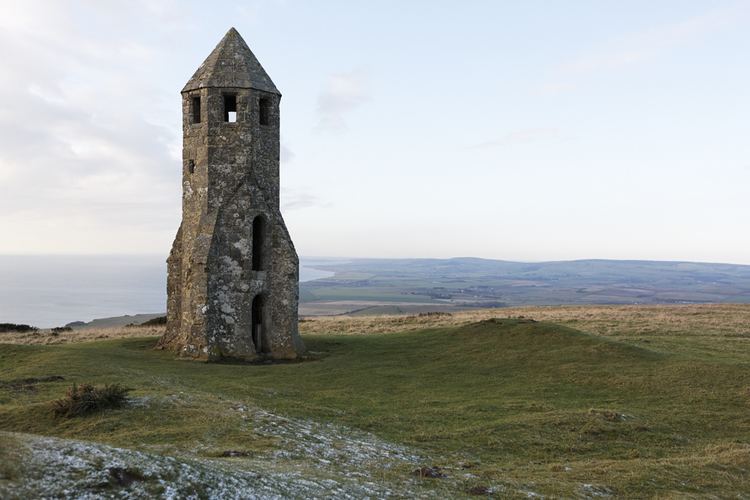Year first lit 1328 Construction stone tower First lit 1328 | Deactivated 1547 Height 11 m | |
 | ||
Location St. Catherine's Down
Isle of Wight Tower shape octagonal tower with pyramidal roof Address Chale, Ventnor PO38 2JB, UK Similar St Catherine's Lighthouse, Hoy Monument, Appuldurcombe House, Yarmouth Castle, Blackgang Chine | ||
Billy vincent st catherine s oratory
St. Catherine's Oratory is a medieval lighthouse on St. Catherine's Down, above the southern coast of the Isle of Wight. It was built by Lord of Chale Walter de Godeton (sometimes spelled "Goditon") as an act of penance for plundering wine from the wreck of St. Marie of Bayonne in Chale Bay on 20 April 1313. The tower is known locally as the "Pepperpot" because of its likeness.
Contents
- Billy vincent st catherine s oratory
- St catherine s oratory on the isle of wight dji phantom 4 pro
- References
It is Britain's only surviving medieval lighthouse, and the second oldest (only the Roman lighthouse at Dover being older). It is a stone structure four stories high, octagonal on the outside and four-sided on the inside, originally attached to the west side of a building; remnants of three other walls are visible.
de Godeton was tried for theft in Southampton, before a jury from the island, and fined 287 and half marks on 27 February 1314. However, he was also later tried by the Church courts, since the wine had been destined for the monastery of Livers in Picardy. The Church threatened to excommunicate him unless he built a lighthouse near Chale Bay.
There was already an oratory on the top of the hill, dedicated to St. Catherine of Alexandria. This was augmented by the construction of the lighthouse, with a chantry to accommodate the priest who tended the light, and also gave Mass for those at peril on the sea.
Although de Godeton died in 1327, the lighthouse was nevertheless completed in 1328. It remained in active use until the Dissolution of the Monasteries between 1538-1541.
In the 18th century Sir Richard Worsley of Appuldurcombe House bolstered the structure by adding four large buttresses to prevent its collapse.
Nearby there are the footings of a replacement lighthouse begun in 1785, but never completed, because the hill is prone to dense fog. Its remnants are known locally as the "salt cellar". A nearby Bronze Age barrow was excavated in 1925.
The current St. Catherine's Lighthouse, constructed after the 1837 wreck of the Clarendon, was built much closer to sea level on St. Catherine's Point.
